In today’s competitive business landscape, managing intellectual property (IP) portfolios effectively is crucial for maintaining a competitive edge and maximizing asset value. A well-structured IP portfolio not only protects innovations but also serves as a strategic lever for growth. This article delves into the essential aspects of IP management, providing a comprehensive overview that includes understanding intellectual property, building a strong portfolio, implementing successful strategies, mitigating risks, and leveraging IP for business growth.
Understanding Intellectual Property (IP)
Intellectual property (IP) encompasses legal rights that arise from intellectual activity in the industrial, scientific, literary, and artistic fields. Understanding the various types of IP is fundamental for businesses to secure their innovations and enhance their market position.
Definition and Importance of IP
Intellectual property refers to creations of the mind: inventions, literary and artistic works, designs, symbols, names, and images used in commerce. The significance of IP cannot be overstated; it serves as a critical asset for businesses, fostering innovation and ensuring a fair return on investment. By protecting these creations, companies can prevent unauthorized use and counterfeiting, thus safeguarding their market position and earning potential.
Furthermore, IP contributes to the overall economy by encouraging innovation and creativity. When organizations know their inventions and brand elements are protected, they are more likely to invest in research and development, which ultimately fuels economic growth. The assurance that their intellectual contributions are legally safeguarded allows businesses to explore new ideas and markets without the fear of losing their competitive edge. This cycle of innovation not only benefits the companies themselves but also enriches society by introducing new products, services, and artistic expressions that enhance our daily lives.
Types of Intellectual Property
There are several primary types of intellectual property, each offering different protections:
- Patents: Protect inventions and processes for a limited period, preventing others from making, using, or selling the invention without permission
- Trademarks: Protect symbols, words, or phrases that distinguish goods or services, maintaining brand identity and customer trust
- Copyrights: Protect original works of authorship, including literature, music, and art, ensuring creators can control the use and distribution of their work
- Trade Secrets: Protect confidential business information that provides a competitive edge, such as recipes, formulas, or special processes
Understanding these types helps in crafting a robust strategy for IP management, ensuring that all valuable assets are adequately protected. Additionally, the landscape of IP is continually evolving, especially with the rise of digital technologies and the internet. Businesses must stay informed about changes in IP law and emerging trends, such as the challenges posed by digital piracy and the complexities of international IP protection. As globalization increases, companies are also faced with the task of navigating different IP laws across jurisdictions, making it essential for them to develop comprehensive strategies that address both local and global IP issues.
Building a Strong IP Portfolio
A strong IP portfolio is an asset that can significantly enhance a company’s market position. Building this portfolio involves systematic identification, evaluation, and protection of IP assets.
Identifying Valuable IP Assets
The first step in building a strong IP portfolio is identifying valuable IP assets. This can include technologies, brand identities, and unique processes developed by the company. A thorough audit of existing assets is essential to uncover all forms of IP currently held, which may include:
- Inventions with patent potential
- Logotypes and brand names that need trademark protection
- Original artistic or written materials eligible for copyright
- Confidential processes or formulas that qualify as trade secrets
Engaging with legal and IP experts during this process can provide insights that may otherwise go unnoticed, ensuring that no valuable asset is overlooked. Additionally, fostering a culture of innovation within the organization encourages employees to contribute ideas that could be transformed into IP. Regular brainstorming sessions and workshops can help identify potential inventions and creative works that might otherwise remain dormant. By actively promoting IP awareness among all team members, companies can tap into a wealth of creativity that can bolster their portfolio.
Protecting Your IP Assets
Once valuable IP assets have been identified, the next critical step is to secure them. This may involve filing for patents, registering trademarks, and setting up copyright protection. Each type of protection has a specific process and requirements:
- Patents: Prepare detailed documentation of the invention, including drawings and a written description, and submit an application to the relevant government body.
- Trademarks: Conduct a trademark search to ensure no conflicts exist and file an application that includes the trademark design and associated goods or services.
- Copyrights: Register original works through a copyright office to provide legal backing in case of infringement.
It’s also beneficial to conduct regular reviews and updates of protections to adapt to any changes in market strategy or technological advancements. Furthermore, companies should consider implementing internal policies that safeguard trade secrets, such as nondisclosure agreements (NDAs) and employee training programs. These measures not only protect sensitive information but also reinforce the importance of IP protection within the corporate culture. By establishing clear protocols for handling proprietary information, organizations can mitigate the risk of unintentional disclosures and maintain a competitive edge in their respective industries.
Strategies for Effective IP Portfolio Management
Effective management of an IP portfolio requires careful consideration and environmental scanning to ensure continual alignment with business goals and market demands.
Regular IP Portfolio Reviews
Conducting regular reviews of the IP portfolio allows businesses to evaluate the relevance and effectiveness of their protections. An annual or bi-annual review should assess factors such as:
- Current market trends and competitive landscape
- Performance of the patents and trademarks held
- Emerging technologies and potential disruptions
- Expired or downgrading IP assets that may no longer provide value
This exercise generates valuable insights into necessary adjustments and helps in deciding whether to maintain, enhance, or divest particular IP assets. Additionally, these reviews can uncover opportunities for innovation, as businesses may identify gaps in their portfolio that align with emerging market needs. For instance, a company that specializes in renewable energy technologies might discover a growing demand for specific innovations in energy storage solutions, prompting them to consider filing new patents or acquiring relevant technologies to fill that gap.
Prioritizing IP Assets
Not all IP assets are equal in terms of value or strategic importance. Prioritizing IP assets allows businesses to focus resources on the most valuable components of their portfolio. Factors to consider in prioritization may include:
- Potential revenue generation through licensing
- Market share impact and competitive advantages
- Time until the potential expiry of protections
- Alignment with long-term business goals
By concentrating efforts on high-value assets, businesses can maximize their return on investment and streamline their IP management processes. Furthermore, this prioritization can facilitate better decision-making regarding potential partnerships or collaborations. For example, a tech company with a strong patent portfolio in artificial intelligence may choose to partner with a healthcare firm to leverage its IP for developing innovative health solutions, thereby enhancing both parties’ market positions and creating new revenue streams.
Mitigating Risks in IP Portfolio Management
While an IP portfolio can offer significant strategic advantages, there are inherent risks that require thoughtful management to mitigate potential challenges. Understanding the landscape of intellectual property is crucial for companies aiming to leverage their innovations while protecting their interests.
Dealing with Infringement Issues
IP infringement can threaten a company’s market position and profitability. In case of suspected infringement, companies should take immediate action. Possible steps include:
- Investigating to assess the severity of the infringement
- Sending a cease-and-desist letter to the offending party
- Exploring negotiation for licensing agreements or settlements
- Considering legal action if necessary
A proactive approach to enforcement and monitoring can reduce the chances of infringement and allow for more effective responses when issues arise. Additionally, companies should invest in robust IP monitoring systems that can help detect potential infringements early. This not only aids in swift action but also serves as a deterrent to potential infringers who are aware that the company actively protects its assets. Furthermore, educating employees about IP rights and the importance of compliance can foster a culture of respect for intellectual property within the organization.
Addressing IP Portfolio Overextension
An IP portfolio can become overextended if too much focus is placed on nonessential or low-value IP assets. This can lead to wasted resources and reduced efficacy. Strategies to address overextension include:
- Regularly evaluating the relevance of each asset to current business objectives.
- Removing or selling low-performing or redundant IP that no longer aligns with strategic goals.
- Focusing investments on areas of growth or new technological developments ensures the portfolio stays lean and effective.
Maintaining a well-curated portfolio will help in sustaining competitive advantages and optimizing resources. In addition, companies should consider the potential for collaboration and partnerships that can enhance their portfolio’s value. By sharing IP with strategic partners, businesses can not only reduce the burden of maintaining extensive portfolios but also open avenues for innovation and co-development. Regularly engaging with industry trends and competitor movements can also provide insights into which assets may need to be prioritized or divested, ensuring that the IP portfolio remains aligned with the evolving market landscape.

Leveraging IP Portfolios for Business Growth
A well-managed IP portfolio not only protects innovations but can also catalyze business growth. Companies should actively seek ways to leverage their IP assets to extract maximum value.
Monetizing Intellectual Property
Monetization strategies involve creating revenue opportunities from IP assets through various channels:
- Licensing agreements that allow other entities to use IP for a fee
- Selling IP assets to other businesses or individuals
- Franchising opportunities that utilize trademarks and other IPs
Exploring these pathways can bring in additional revenues and stimulate further innovation, supporting overall business objectives. For instance, a technology firm may license its patented software to startups, generating a steady income stream while fostering a network of developers who can enhance the software’s ecosystem. Additionally, companies can explore joint ventures, where they collaborate with other firms to develop new products or services, sharing both the risks and rewards while leveraging each other’s IP assets.
IP Portfolio and Business Strategy Alignment
For an IP portfolio to drive business growth effectively, it needs to be aligned with the broader business strategy. This involves:
- Integrating IP considerations into product development processes.
- Collaborating with other departments, such as marketing and R&D, to extract full value from IP assets.
- Regularly aligning the IP strategy with evolving business goals and market conditions.
This coordination ensures that IP assets contribute directly to competitive advantage and market success. Furthermore, companies should consider conducting regular IP audits to identify underutilized assets that could be repositioned or enhanced. By assessing the market landscape and understanding competitor IP strategies, businesses can refine their approaches, ensuring that their IP portfolio not only supports current initiatives but also anticipates future trends and opportunities. Engaging in continuous education around IP rights and market shifts can empower teams to make informed decisions that maximize the impact of their intellectual property.
Conclusion
In conclusion, managing IP portfolios effectively requires a comprehensive knowledge of intellectual property rights, a focused approach to building and protecting assets, regular reviews of portfolio performance, and strategic alignment with business goals. By employing these practices, companies can safeguard their innovations while leveraging IP as a powerful tool for ongoing growth and success.
Computer Packages Inc. (CPI) is a privately owned IP management company with over fifty years of experience serving the IP community. Our mission is to be the most trusted partner in safeguarding clients’ IP assets with innovative IP management software and annuity services. Learn how we specialize in IP patent, trademark, and annuity management by exploring our services.


